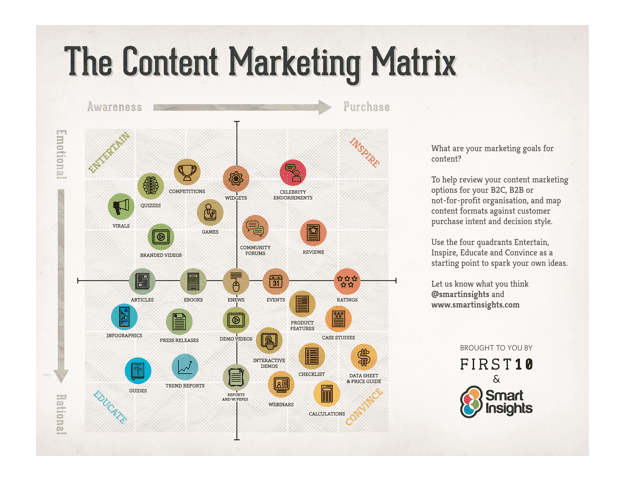Top takeaways from the content marketing/SEO workshop at Digital Impact
Earlier in September I attended Digital Impact - Smart Insights’ inaugural digital marketing conference at the Cavendish Conference Centre in London. And as expected, it was a festival of all things digital, with presentations and workshops on a variety of topics including ecommerce strategy, digital transformation, paid search best practices and mobile strategy. You can get an excellent summary/ review of the whole day.
For this post, I want focus on another key technique for Digital Impact and one that was the subject of a workshop in the afternoon hosted by ClickThrough.
[slideshare id=39289618&doc=searchcontentmarketingsept2014v4-withoutpresenternotes-140919083858-phpapp01]
Where is SEO now?
Before delving into the workshop, a few facts were shared with the audience to confirm the current state of SEO:
- Google are continually fighting poor content and spam
- Google’s ranking criteria has changed drastically
- Content marketing is a top priority for most digital marketing professionals
Most marketers are therefore asking:
- 1. How do I create high value content?
- 2. How do I create content that is shareable?
- 3. How do I get quality links that conform to Google’s guidelines?
- 4. How do I do PR and outreach effectively?
What is a good/ bad link?
To begin answering these questions, we first looked at what constitutes a good or bad link. Without looking at Google’s Webmaster guidelines, the audience were asked to spend 20 seconds on 13 examples of links to decide whether they are the types of links that could harm websites and therefore not compliant with Google’s Webmaster guidelines.
From all the examples, six of the links were good and seven bad, and it was interesting to see the audiences responses to the questions (for the record, I scored 11/13 - #lucky!).
For example, this type of link is perfectly fine:
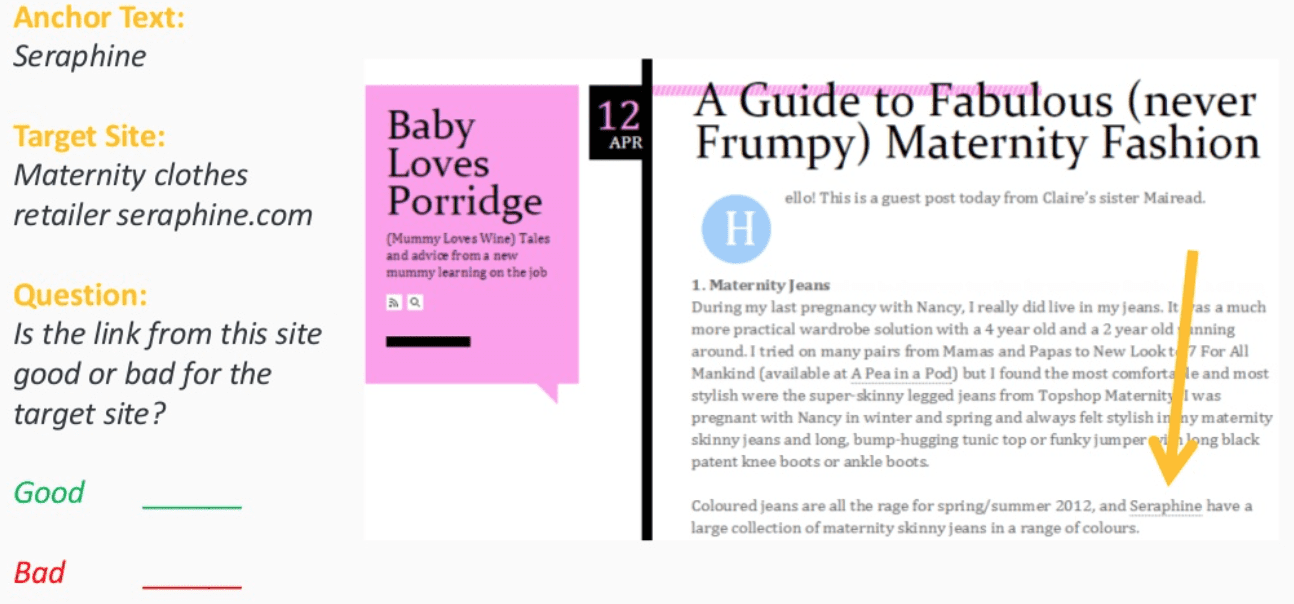
Whilst this one isn’t:
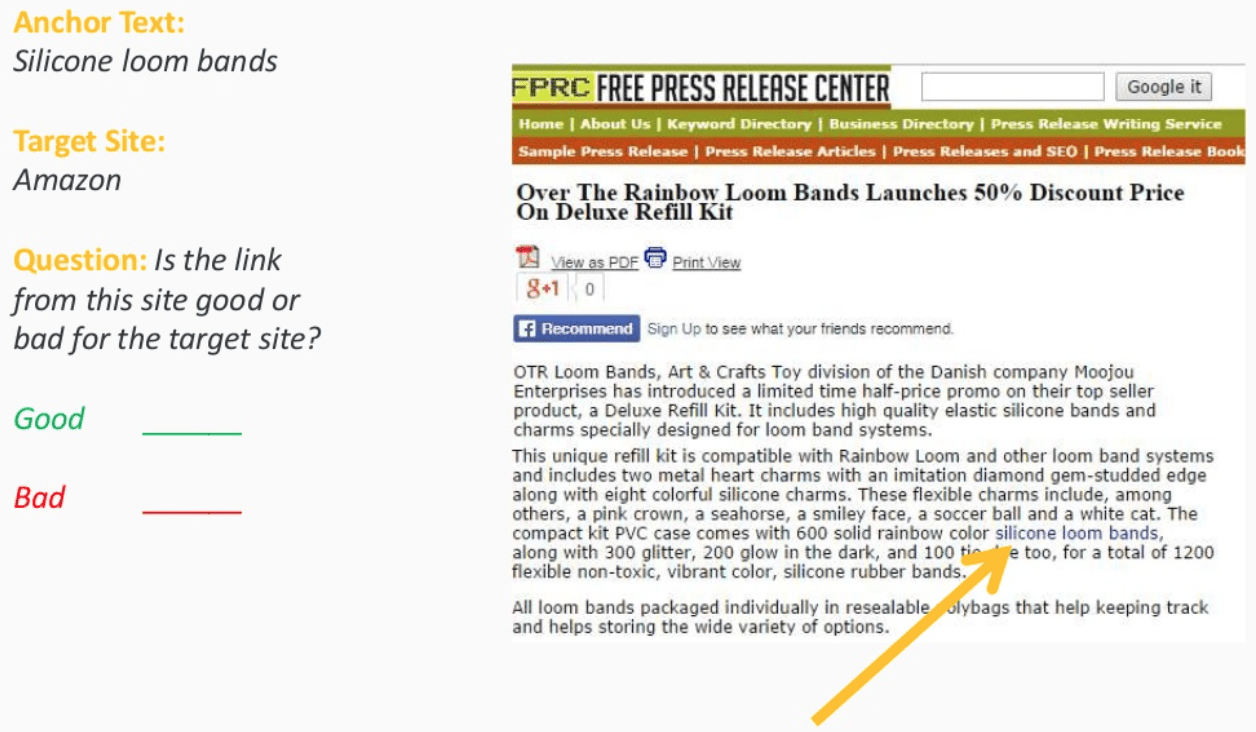
The first is an acceptable link to a website, which uses branded anchor text, whilst the second example uses generic anchor, something that Google now frowns upon.
Recommendations to avoid Google penalties
So with Google now taking such a tough stance on poor quality backlink profiles, ClickThrough recommend the following process, even if you haven’t experienced a Google penalty:
- Identify every link to your website
- Check if it complies with Google’s Webmaster Guidelines
- Remove the links that don’t comply
Assess the effectiveness of your strategy
For any site wanting to make an impact in the modern world of SEO, a focus on content is key.
At a broad level, ClickThrough work with clients on three core areas of SEO:
- Content marketing and PR
- Process for review and improvement
- Technical SEO
From these areas, there are 10 pillars of SEO and content strategy [] that sites should follow:
- Analysis, research and discovery strategies
- Technical consulting and research to maximise site crawlability and indexing
- On-page optimisation
- Link reputation strategies (both internal and external linking)
- Local and international strategies
- Website monitoring and maintenance
- Analytics and conversion optimisation
- Content marketing and creative ideas
- PR, blogger, influencer outreach and distribution
- Social strategies
The 10 pillars provide a useful framework to easily identify and focus on the key areas of SEO and content marketing.
Without the time to go through all 10 pillars, the workshop specifically looked checklists for benchmarking:
Link reputation strategies:
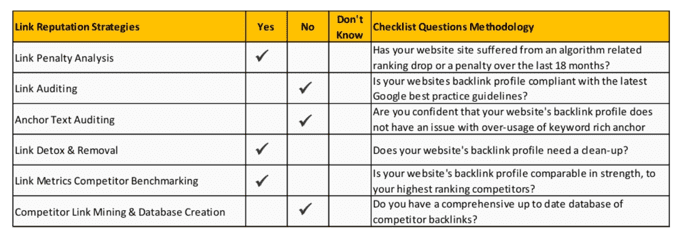
PR, blogger, influencer outreach and distribution
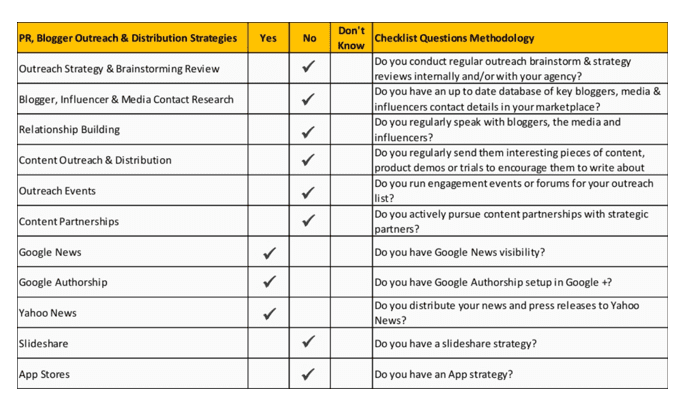
Customer and buyer persona analysis
The final section of the workshop focused on the importance of creating meaningful content for audiences, which should always start with a discovery phase for your content strategy and an appreciation of who the customer/ buyer is.
Personas allow us to build a picture of the type of customer groups we’re trying to attract. An understanding of our customer personas is essential to the content creation process as well as other activity including product development, customer acquisition and sales.
As with the 10 pillars, ClickThrough also provide a useful checklist for the creation of different customer personas, breaking the elements down into a general overview, behavioural segmentation and lifestyle segmentation:
Summary and top tips for planning your content/SEO strategy
To review, the main recommendations for anyone planning a content/ SEO strategy is to tackle the following key areas:
• Audit your backlink profile and clean it up
• Complete the 10 pillars of SEO & Content Marketing
• Complete a persona audit to assess content needs
Once this is complete, you’ll be in a better position to begin putting your content/ SEO strategy into action, create content and start your outreach programme.
Some top tips to consider
Here are some next steps to consider using a range of advice and templates on Smart Insights:
